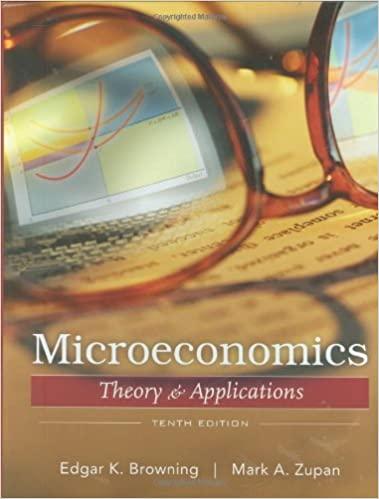Question
Managerial Accounting and Concepts Part2 1. In a typical cost formula: a. Fixed costs are per unit and variable costs are per unit b. Fixed
Managerial Accounting and Concepts Part2
1. In a typical cost formula:
a. Fixed costs are per unit and variable costs are per unit
b. Fixed costs are per unit and variable costs are in total
c. Fixed costs are in total and variable costs are in total
d. Fixed costs are in total and variable costs are per unit
2. At the breakeven point:
a. Contribution margin = fixed costs
b. Variable costs = fixed costs
c. Sales = Contribution margin
d. Contribution margin = zero
3. Contribution margin ratio is:
a. Unit sales price/unit contribution margin
b. X/margin of safety
c. Total contribution/sales
d. Variable cost/fixed cost
4. Which of the following is not an element of ABC:
a. Tracing costs to cost objects
b. Calculating a predetermined rate
c. Identify the cost drivers
d. All are elements of ABC
5. One element of a contribution income statement that differs from a functional income statement is:
a. Direct materials are split between variable and fixed costs
b. Overhead is defined as both fixed and variable
c. Per unit sales commissions are always considered fixed
d. No difference. These are different terms for the same thing
6. Hawke Caribbean Sales has developed the following projections for the upcoming year of operations.
Sales of 100,000 units at $5. Units sold equal units produced
Variable costs for 100,000 units:
Direct material $125,000
Direct labor 100,000
Variable overhead 30,000
Selling and administrative expense 45,000
Total fixed costs 120,000
6.1 What is Hawkes projected breakeven point in units?
a. 60,000
b. 54,000
c. 500,000
d. 120,000
6.2 What is Hawkes projected breakeven point in dollars?
a. $500,000
b. $120,000
c. $130,000
d. $300,000
6.3 What is the projected contribution margin ratio?
a. 25%
b. 40%
c. 50%
d. None of the above
7. You are considering adopting an activity based costing model in your organization. Two activity pools are machine setup costing $30,000 and material moves costing $45,000. The measure for each is the number of occurrences which are 200 and 450 for machine setups and material moves, respectively. Product XJ500 requires 25 setups and 40 material moves. The total ABC cost assigned to XJ500 is:
a. 50,000
b. 17,750
c. 3,300
d. 7,750
8. You are considering adopting an activity based costing model in your organization. Two activity pools are machine setup costing $30,000 and material moves costing $45,000. The measure for each is the number of occurrences which are 200 and 450 for machine setups and material moves, respectively. Product XJ500 requires 25 setups and 40 material moves. What is the per unit ABC cost assuming 100 units produced?
a. $450.00
b. $115.38
c. $77.50
d. $90.45
Step by Step Solution
There are 3 Steps involved in it
Step: 1

Get Instant Access to Expert-Tailored Solutions
See step-by-step solutions with expert insights and AI powered tools for academic success
Step: 2

Step: 3

Ace Your Homework with AI
Get the answers you need in no time with our AI-driven, step-by-step assistance
Get Started


